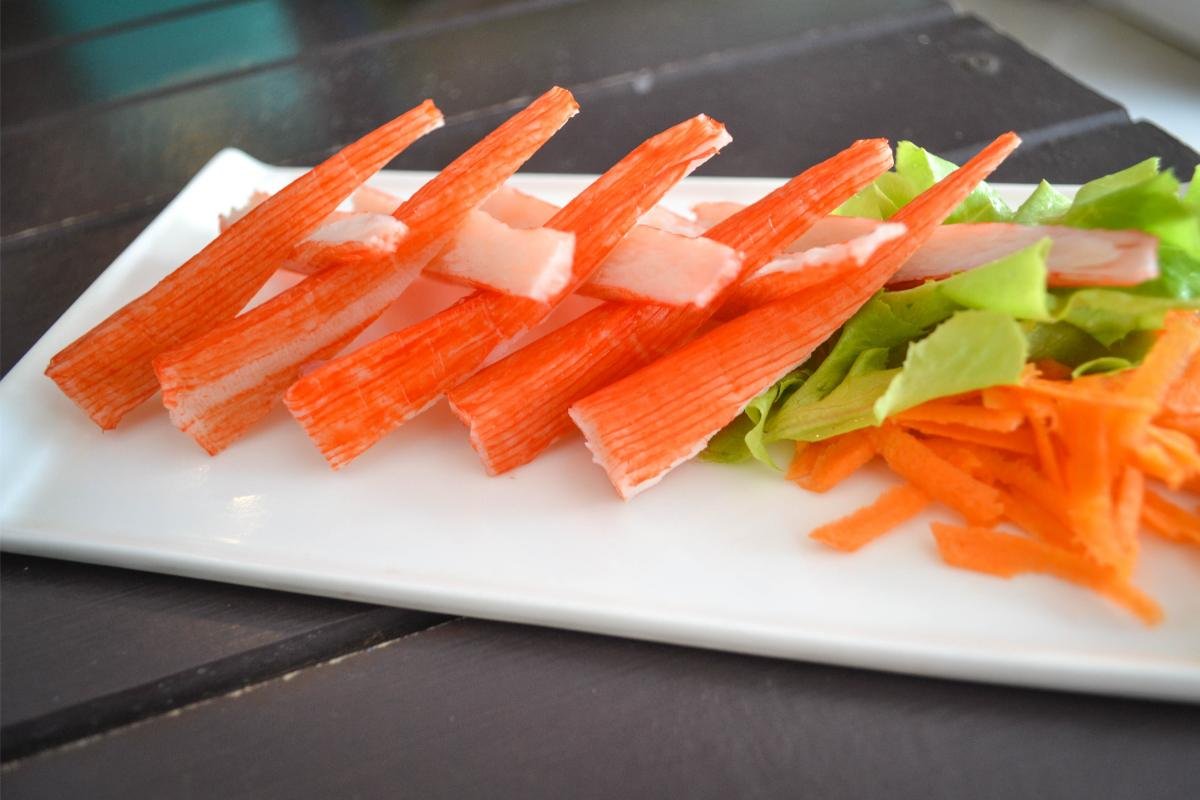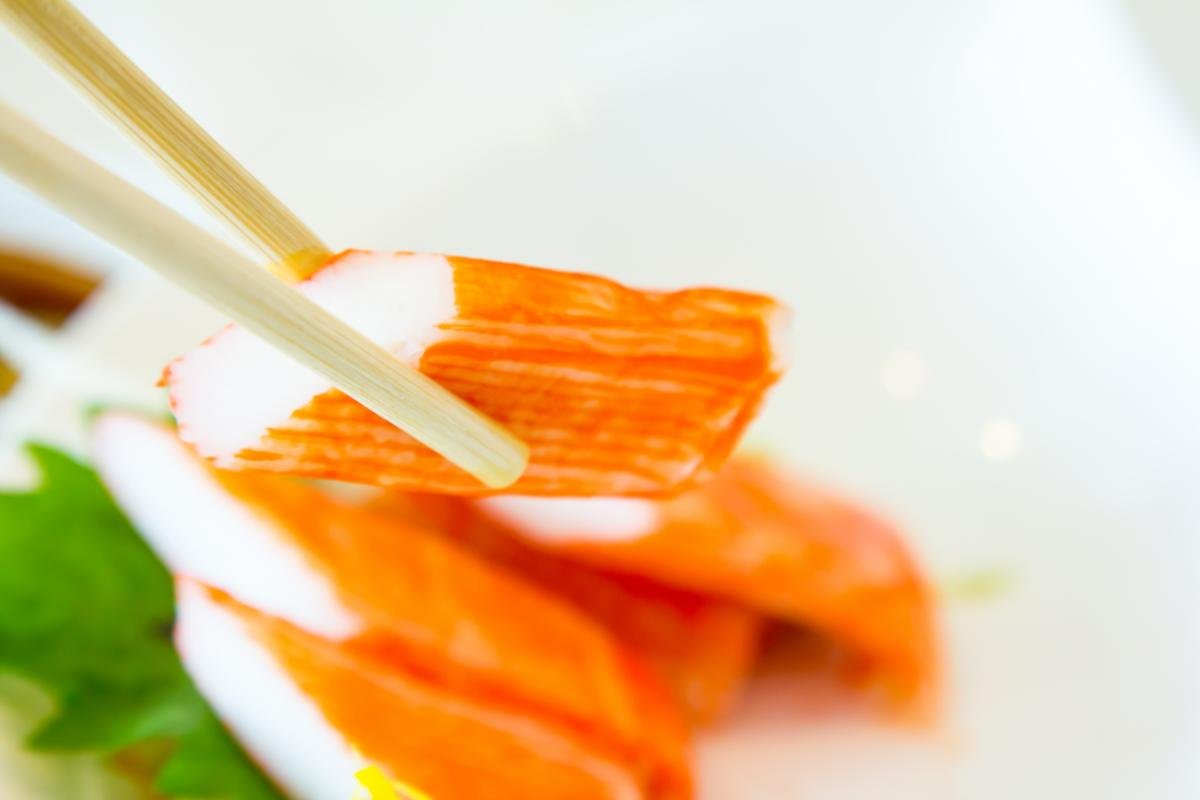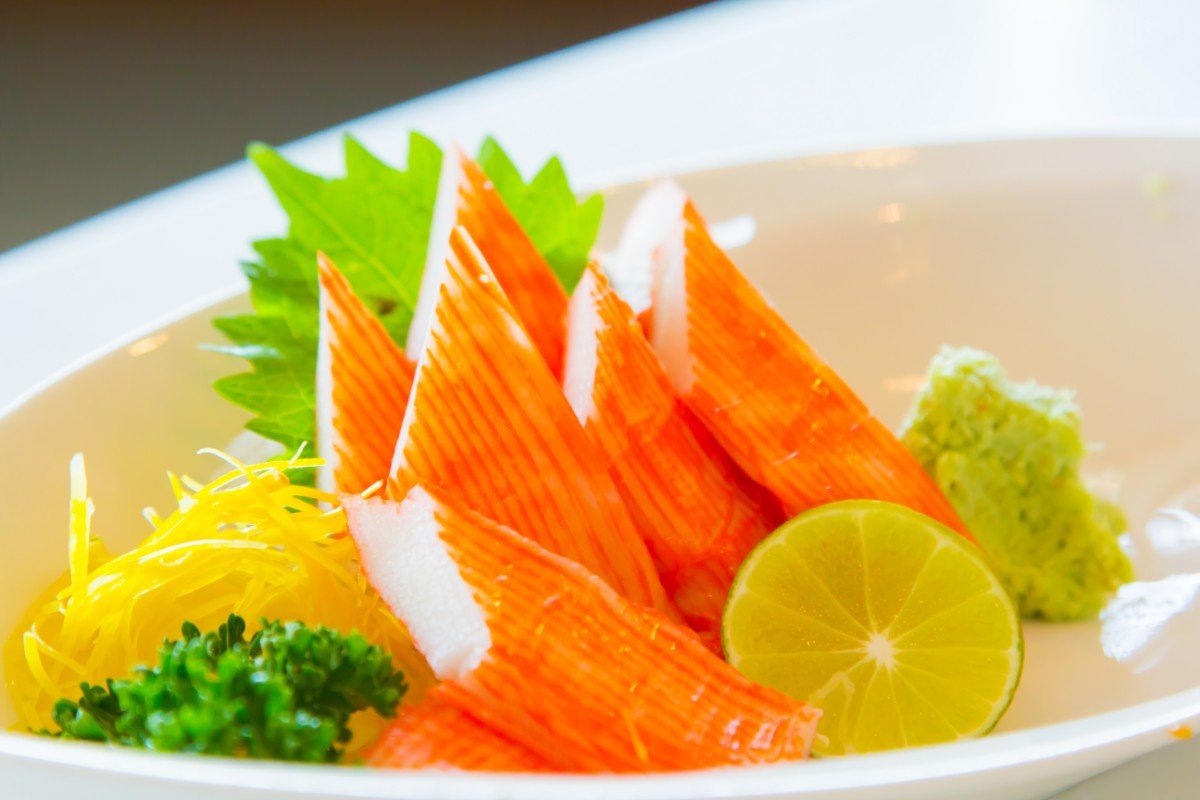Kani, a term that conjures images of delicate flavors and exquisite culinary art, is a cornerstone of Japanese cuisine with a rich history that spans centuries. At its core, Kani refers to crab, a seafood delicacy revered not only in Japan but also across the globe for its sweet, tender flesh. However, Kani’s essence transcends the mere physicality of crab meat, weaving itself into the cultural and culinary fabric of societies worldwide.
This blog embarks on a comprehensive exploration of Kani, from its origins in the coastal waters of Japan to its contemporary status as a global culinary phenomenon. We will delve into the traditional dishes that celebrate Kani’s versatility, the nutritional benefits it offers, and the cultural significance it holds. Moreover, we will examine the sustainability and ethical considerations surrounding Kani, highlighting the balance between culinary tradition and environmental responsibility.
As we navigate through the culinary journey of Kani, our aim is to illuminate the nuances of this beloved ingredient, showcasing its adaptability and enduring appeal in the culinary world. Join us as we explore the fascinating story of Kani, a testament to the art of Japanese cuisine and its influential role in shaping global culinary practices.
The Culinary Journey of Kani

Delving into the culinary journey of Kani reveals a rich tapestry of history, tradition, and innovation. This section uncovers the origins and evolution of Kani, celebrates its central role in Japanese cuisine, and explores its global adaptation, showcasing the versatility and universal appeal of this beloved seafood.
Origins and Evolution
Kani’s story begins along the coastlines of Japan, where the abundance of marine life fostered a deep-rooted fishing culture. Historically, Japanese fishermen harvested crab as a valuable source of food, leveraging various methods to catch these creatures of the sea. Over the centuries, the methods of preparing and consuming crab evolved, reflecting the changing tastes and technologies of Japanese society.
The regional variations of Kani dishes highlight Japan’s diverse culinary landscape. In the northern regions, where the waters are colder, larger species of crab such as the renowned King Crab offer a meatier delicacy, often steamed or boiled to preserve their natural sweetness. Meanwhile, southern regions might favor lighter, more delicate preparations, incorporating crab into sushi and sashimi dishes.
Kani in Japanese Cuisine
At the heart of Japanese cuisine, Kani takes center stage in an array of traditional dishes. Kani sushi and Kani sashimi, for instance, celebrate the pure, unadulterated flavor of crab meat, served fresh with minimal accompaniments. Another classic dish, Kani miso, involves using the crab’s innards, blended into a rich, savory paste served as a delicacy on its own or as a flavoring for other dishes.
Preparation methods vary widely, from boiling and steaming to grilling, each method chosen to enhance the natural flavors and textures of the crab. Key ingredients like soy sauce, sake, and mirin often accompany Kani, complementing its sweetness with their umami and savory notes.
Global Adaptation
As Kani crossed borders, it found a new life in the kitchens of chefs around the world, who embraced this ingredient with creativity and enthusiasm. In the West, Kani became a staple in sushi rolls, most notably the California roll, where it is combined with avocado and cucumber, offering a gateway for many to Japanese cuisine. Beyond sushi, international chefs have incorporated Kani into salads, pasta dishes, and even hearty crab cakes, blending the traditional flavors of Japan with local tastes and ingredients.
This fusion of culinary traditions speaks to Kani’s versatility and adaptability. Modern interpretations continue to push the boundaries, from Kani wrapped in crispy tempura to innovative dishes that pair crab with flavors from around the globe. These creations not only pay homage to Kani’s origins but also celebrate its ongoing evolution as a global culinary delight.
Nutritional Value and Health Benefits

Kani, beyond its culinary appeal, is a powerhouse of nutritional benefits. This section delves into the nutritional profile of Kani, its health benefits, and addresses common misconceptions, presenting Kani as not just a culinary delight but a boon to a healthy lifestyle.
Nutritional Profile of Kani
Crab meat, the essence of Kani, is renowned for its high protein content, offering a lean source of energy that is low in fat and calories. A serving of Kani provides essential amino acids necessary for muscle development and repair, making it an excellent choice for those looking to maintain or build muscle mass without consuming high levels of saturated fats.
Moreover, Kani is rich in omega-3 fatty acids, known for their anti-inflammatory properties and role in heart health. These beneficial fats contribute to lowering blood pressure, reducing triglyceride levels, and enhancing overall cardiovascular health.
Kani also boasts a wealth of vitamins and minerals, including Vitamin B12, selenium, zinc, and copper. Vitamin B12 is crucial for maintaining healthy nerve cells and producing DNA, while selenium, an antioxidant, plays a key role in metabolic function and boosts the immune system. Zinc is essential for immune function and wound healing, and copper aids in iron absorption and the formation of red blood cells.
Health Benefits Associated with Regular Consumption
Incorporating Kani into one’s diet can lead to numerous health benefits. The high-quality protein and low-fat content make it an ideal dietary component for weight management and muscle maintenance. Its omega-3 fatty acids not only support heart health but also contribute to brain health, potentially reducing the risk of Alzheimer’s disease and depression.
The rich array of vitamins and minerals in Kani enhances the immune system, ensuring the body’s defenses are strong against infections and diseases. The antioxidant properties of selenium, combined with the anti-inflammatory effects of omega-3 fatty acids, further protect the body from cellular damage and chronic diseases.
Addressing Common Misconceptions and Dietary Considerations
While Kani is a nutritious and beneficial addition to many diets, it’s important to navigate some common misconceptions. For those with shellfish allergies, consuming Kani may pose risks, and it’s crucial to consult with healthcare providers before incorporating it into the diet.
Additionally, the consumption of Kani should be mindful of sustainability and ethical sourcing. Opting for Kani from sources that practice responsible fishing and environmental stewardship can mitigate the impact on marine ecosystems and ensure the long-term availability of this precious resource.
Cultural Significance of Kani
Kani’s impact extends far beyond the realm of nutrition and culinary delight, embedding itself deeply within the cultural fabric of societies, particularly in Japan. This section explores the role of Kani in Japanese culture and traditions, its presence in celebrations and festivals, and its symbolism and representation in art and literature.
Role in Japanese Culture and Traditions
In Japan, Kani is not merely a food item; it is a cultural icon, representing the harmony between humans and the sea. The Japanese have celebrated the crab harvest for centuries, viewing it as a seasonal bounty that nature bestows upon them. This deep respect for Kani is evident in the meticulous methods of preparation and consumption, where nothing goes to waste, showcasing a profound appreciation for the creature’s life.
Kani also plays a pivotal role in Japanese hospitality and cuisine, often served to honor guests or on special occasions. The art of Kaiseki, a traditional multi-course Japanese dinner, sometimes features Kani as a seasonal delicacy, prepared with utmost care to highlight its natural flavors and presented as a work of art, embodying the seasons and the chef’s craftsmanship.
Kani in Celebrations and Festivals
The significance of Kani transcends everyday meals, marking its presence in various celebrations and festivals across Japan. One of the most notable events is the Kani Matsuri (Crab Festival), which takes place in regions famous for crab fishing. These festivals celebrate the annual crab harvest, featuring markets, cooking demonstrations, and tastings, where locals and tourists alike immerse themselves in the culinary and cultural traditions surrounding Kani.
During the New Year, a time for feasting and family reunions, Kani often graces the table as part of Osechi-ryori, a traditional Japanese New Year’s cuisine. Its inclusion symbolizes prosperity and longevity, blessing the year ahead with abundance and health.
Symbolism and Representation in Art and Literature
Kani’s influence extends into the realms of art and literature, where it has been a symbol of resilience, regeneration, and protection. In Japanese folklore and mythology, crabs are often depicted as protectors of the sea, guarding its treasures and secrets. This symbolism is echoed in traditional haiku and paintings, where Kani is revered not only for its culinary value but also for its spiritual significance.
Artists and poets have long been inspired by the elegance and mystery of Kani, using it as a motif to explore themes of life, renewal, and the natural cycle. In literature, Kani often appears as a character in stories and plays, embodying traits such as strength, perseverance, and the delicate balance of nature.
Sustainability and Ethical Considerations
The journey of Kani from the ocean to our tables is fraught with sustainability and ethical dilemmas. This revised section delves into the environmental impacts of Kani harvesting, advocates for sustainable fishing practices, and underscores the importance of ethical consumption.
Environmental Impact
The pursuit of Kani significantly influences marine ecosystems. Overfishing and the destruction of habitats stand out as pressing issues. Consequently, it’s crucial to promote responsible sourcing and conservation initiatives to safeguard our oceans’ health.
Sustainable Fishing Practices
Moreover, adopting sustainable practices is vital for the well-being of crab populations and the ecological balance of marine environments. Practices such as implementing quota systems, enforcing seasonal closures, and restricting certain fishing gear have shown promise. Furthermore, seeking out certifications like those from the Marine Stewardship Council (MSC) can guide consumers towards more ethical seafood choices, highlighting the interconnectedness of our actions and the ocean’s health.
Ethical Consumption
Additionally, the power of consumer choice cannot be overstated. By opting for sustainably sourced Kani, individuals support the preservation of marine life. This choice not only promotes the industry’s shift towards more sustainable practices but also contributes to a larger movement towards ethical consumption. Ultimately, raising awareness and increasing the demand for ethically sourced seafood are imperative steps towards fostering a sustainable relationship with our planet’s invaluable marine resources.
Kani in the Culinary World Today
Kani’s journey through time has seen it evolve from a local delicacy to a globally recognized ingredient, cherished in various cuisines for its versatility and distinctive flavor. This section explores the current popularity and trends surrounding Kani, its significant role in the global seafood market, and the innovative future prospects that chefs and food enthusiasts continue to pursue.
Popularity and Trends
In today’s culinary landscape, Kani stands as a testament to the global appetite for Japanese cuisine and the broader trend of cross-cultural culinary exploration. Its popularity extends beyond traditional dishes, finding its way into innovative recipes and fusion cuisines that appeal to a wide range of palates. Kani sushi rolls, for instance, have become a staple in sushi establishments worldwide, serving as a familiar entry point for those new to Japanese flavors.
The trend towards healthier eating has also spotlighted Kani as a nutritious seafood choice, rich in protein and omega-3 fatty acids. As consumers increasingly seek out foods that offer both health benefits and culinary delight, Kani’s profile continues to rise, featured in salads, wraps, and even health-conscious poke bowls.
Role in the Global Seafood Market
Kani occupies a significant place in the global seafood market, driven by its demand in both traditional and modern culinary contexts. Japan remains the heartland of Kani consumption, but its appeal has spread to the United States, Europe, and other parts of Asia, where it is sought after for both its authentic and adapted forms.
This international demand has spurred innovations in fishing, farming, and distribution, ensuring a steady supply of Kani to global markets. Sustainable fishing practices and aquaculture developments have become increasingly important, as the industry seeks to balance consumer demand with the need to preserve marine ecosystems and ensure the long-term viability of crab populations.
Future Prospects and Innovations
The future of Kani in the culinary world is ripe with potential for innovation and creative expression. Chefs and food innovators are continuously experimenting with Kani, combining it with unexpected ingredients and techniques to create new dishes that challenge and delight the senses. From molecular gastronomy to plant-based adaptations, Kani’s versatility makes it a prime candidate for culinary experimentation.
Moreover, the growing interest in sustainable and ethical food sourcing is leading to new approaches to Kani production and consumption. Efforts to improve traceability, enhance aquaculture methods, and promote responsible fishing practices are shaping a future where Kani can be enjoyed not only for its taste but also for its role in a sustainable food system.
Conclusion
Our journey through the intriguing world of this cherished seafood has highlighted its transformation from local delicacy to international staple. We’ve explored its rich history, significant health benefits, and the creative culinary expressions it inspires worldwide. This delicacy stands as a testament to the blend of tradition and innovation, captivating food enthusiasts globally.
Those eager to explore a variety of ways to savor this delicacy can find inspiration at RECIPES ZAP. Our collection spans from time-honored recipes to contemporary fusions, all designed to elevate your dining experience.
Reflecting on the saga of this seafood, we’re reminded of its role not just as a meal but as a symbol of cultural exchange and culinary inspiration. We encourage you to dive into the array of flavors and narratives it offers, continuing the celebration of this remarkable ingredient

